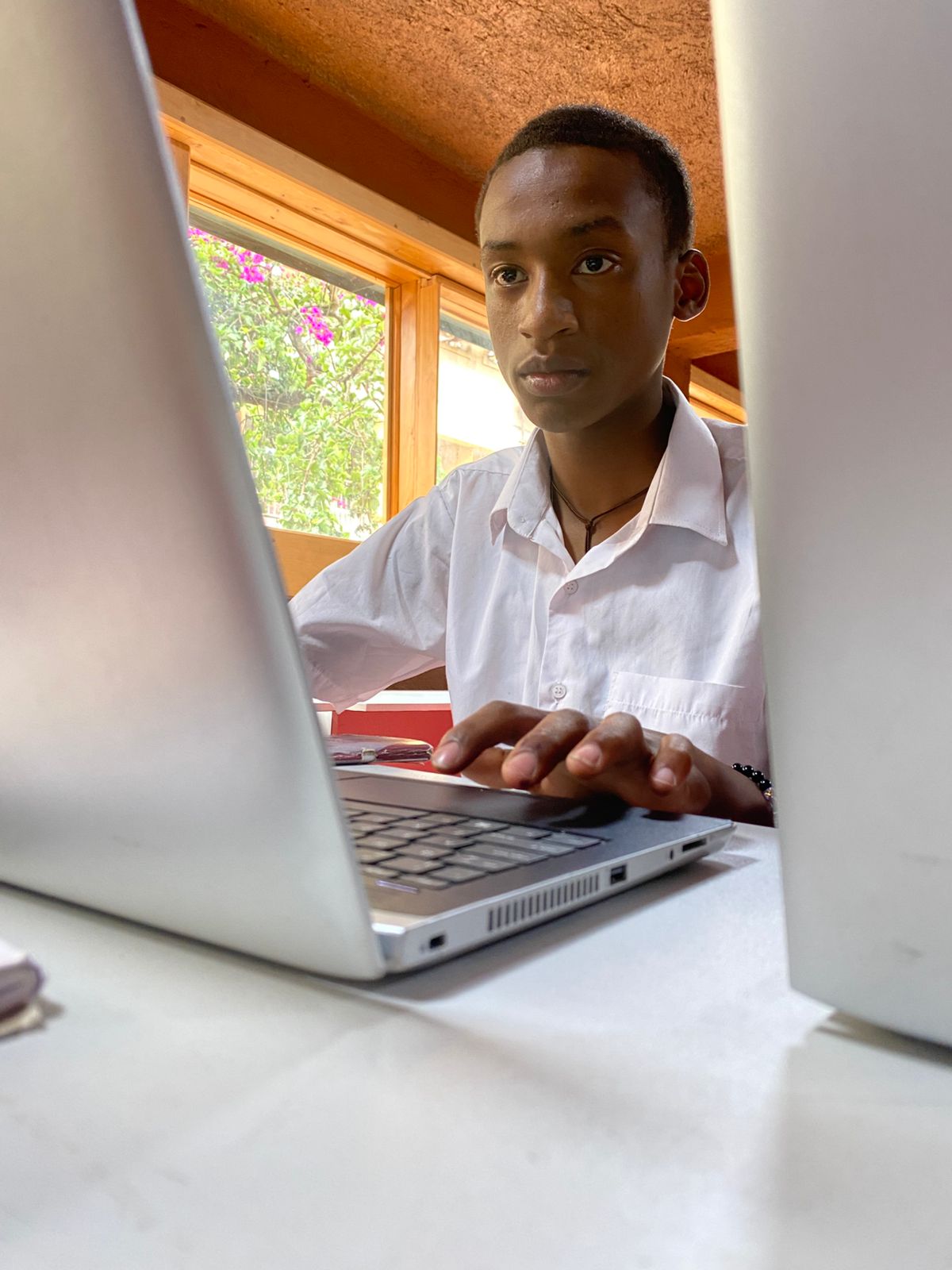In a world where technology is ever-present, today’s students are naturally tech-savvy. Yet, while technology enriches learning and offers countless benefits, we recognize the importance of creating balance in our school. Our approach integrates digital tools thoughtfully while ensuring that students do not become overly dependent on screens or exposed to the potential downsides of online influence. This blog explores how we balance technology in our school to foster well-rounded, independent thinkers.
How Technology Supports Learning at Our School.

In our classrooms, technology plays an important role in making learning interactive and engaging. Educational apps, multimedia resources, and online research tools help explain complex concepts, making subjects more accessible and enjoyable for students. Furthermore, adaptive learning platforms allow us to cater to each student’s pace, addressing individual needs effectively.
However, we see technology as a tool to support—not replace—traditional methods of teaching. We are dedicated to maintaining a healthy balance, focusing on skills that extend beyond the digital. Our approach ensures that students can effectively use technology without relying on it exclusively.
Limitations on Technology Use: Encouraging Balanced Learning.
While technology offers many advantages, we understand the importance of mindful usage. To prevent over-reliance on digital tools, we have set specific guidelines and limitations within our school:
- Screen Time Management
We are mindful of screen time, balancing digital and offline activities throughout the day. Screen-free periods allow students to engage in hands-on learning, group discussions, and individual reflection. By designating certain hours as “tech-free,” we help students focus on activities that build interpersonal skills, empathy, and independent thinking. - Structured Digital Learning Times
Digital tools are used intentionally in classrooms at set times, typically for project-based learning or specific subjects where visual aids add value. We ensure that screens are used only when they enhance learning, promoting a mindful relationship with technology. This way, students come to see devices as aids rather than necessities. - Emphasis on Traditional Learning Tools
While students have access to laptops, we actively encourage the use of traditional learning tools such as books, notebooks, and hands-on materials. For example, students conduct research using both digital sources and library resources, integrating information to develop a fuller understanding of the material. Similarly, subjects like math and science involve hands-on experiments and written problem-solving exercises, fostering critical thinking.
Promoting Online Safety and Responsible Use
With so much information accessible online, it is essential to guide students on navigating digital spaces safely and responsibly. Our school provides digital literacy programs that emphasize online etiquette, privacy, and responsible use of technology. Through these lessons, students learn how to critically evaluate information, avoid misinformation, and understand the importance of protecting personal information.
In addition, we educate students about the potential dangers of online influence, such as cyberbullying, misinformation, and inappropriate content. By promoting an awareness of these risks, we empower students to make smart choices in their online interactions and build a strong foundation for digital citizenship.
Blending Digital and Non-Digital Skills
Our school values a well-rounded education that balances both digital and traditional skills. To encourage this, we integrate technology with non-digital experiences:
- Group Activities and Social Learning: Technology is only part of the equation. We ensure that students participate in group discussions, debates, and team projects that build communication and collaboration skills.
- Encouraging Creative Expression: Activities like art, music, and drama play an essential role in our curriculum. These hands-on experiences are key to fostering creativity, resilience, and emotional intelligence.
- Physical Education and Outdoor Activities: We promote a healthy lifestyle with regular physical education classes, outdoor games, and sports, ensuring students engage in activities that support physical and mental well-being.
Fostering Critical Thinking Beyond Technology
Our goal is to nurture independent thinkers. To achieve this, we limit reliance on technology and encourage critical thinking skills. In subjects like literature and history, for example, students engage in analytical discussions, debates, and written assignments, which foster problem-solving and a deeper understanding of content. Additionally, projects often require students to combine digital research with offline activities, such as interviews, experiments, or field observations, encouraging them to draw from multiple sources.
Parental Involvement: Extending Balance Beyond School
We believe that the balance we cultivate at school can be supported at home as well. Through regular communication with parents, we provide guidelines and resources to help manage screen time outside school hours. We encourage families to implement device-free time at home, especially during meals and before bedtime, to promote healthy habits. By working together, we create a consistent message on the value of balanced technology use.
Conclusion
Technology has transformed education, but balance remains essential in nurturing well-rounded, independent learners. Through mindful usage, structured screen time, traditional learning practices, and a strong focus on digital citizenship, we provide students with the skills to thrive in both digital and real-world environments. By striking this balance, we equip them to use technology responsibly while building a foundation for lifelong learning and success.

